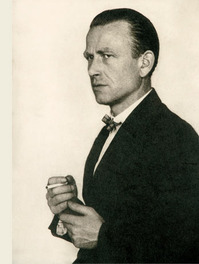Museum of Fine Art

The Montreal Museum of Fine Arts was called the Montreal Art Association when it began in 1860. But it was not until 1879 that the museum started to exhibit art. Since then, with the help of donators, the museum has flourished into one of the main centers of art in Montreal. MMFA hosts important permanent collections as well as visiting ones. Exploring different mediums, the museum has hosted a traveling exhibit of the work of fashion designers such as Yves St-Laurent. Starting next June, it will display selected pieces of the collections of Jean-Paul Gaultier. The museum holds in its permanent collections, important masterpieces of artists such as Rodin, Matisse, Rembrandt, Picasso, Tissot and many others. In 1993, MMFA acquired the famous portrait of Hugo Simmons made by the notorious artist Otto Dix.
| |
|||||||
| ADMISSION FEES taxes included |
WEDNESDAY NIGHT from 5 to 8.30 p.m. |
GROUP 20 people + | |||||
| Adults | $15 | $7.50 | $12 | ||||
| People 65 + | $10 | $7.50 | $8 | ||||
| Students (- 30 years old with ID Card) | $7.50 | $7.50 | $6 | ||||
| Family* | $30 | $15 | n/a | ||||
| Children 12 and under** | Free | Free | $2 | ||||
| VIP of the Museum | Free admission to all exhibitions | n/a | |||||
| * Family: 1 adult and 3 children 16 and under or 2 adults and 2 children 16 and under. ** Must be accompanied by an adult. For families only. Inapplicable for groups | |||||||
Museum Opening Hours
| Admission Fees | Free admission at all times | ||||||
| Monday | Closed | Closed | |||||
| Tuesday | 11 a.m. to 5 p.m. | 11 a.m. to 5 p.m. | |||||
| Wednesday1, Thursday, Friday | 11 a.m. to 9 p.m. | 11 a.m. to 5 p.m. | |||||
| Saturday and Sunday | 10 a.m. to 5 p.m. | 10 a.m. to 5 p.m. | |||||
|
1 Admission is half price on Wednesday, from 5 to 8.30 p.m. for adults. Otto Dix | |||||||
 One of the
visiting exhibitions at the MMFA is an ensemble of the work of Otto Dix
(1891-1969). He was a German artist who depicted the world as it is: beautiful and
ugly. Not scared to display the most disgusting but realistic details, the
artist created a notorious and controversial reputation for himself, especially
in a war-destructed Germany.
One of the
visiting exhibitions at the MMFA is an ensemble of the work of Otto Dix
(1891-1969). He was a German artist who depicted the world as it is: beautiful and
ugly. Not scared to display the most disgusting but realistic details, the
artist created a notorious and controversial reputation for himself, especially
in a war-destructed Germany.The exhibition is divided into the phases of his work and life. Traumatized by his First World War experience as a soldier, he drew pictures of the battlefield as well as wounded soldiers. The realistic details are terrifying.
The liveliness is found mostly in the desperate eyes of his subjects. He then went on painting street scenes, depicting people of every age in the streets--not all pretty but still beautiful.
One of the most important part of his work was his depictions of women--mostly prostitutes. Not always favorably portraying his female subjects, the painter observes women of different ages and shapes. It is difficult to understand whether he celebrates women or if he makes misogynistic comments about them. They are naked and most of the time depicted in unflattering dispositions. Are they disposable objects or are they liberated? Otto Dix strengthened his notorious reputation and was arrested for indecency during this period.

![Picture-1_thumb[7].png](https://www.montrealites.ca/assets_c/2010/11/Picture-1_thumb%5B7%5D-thumb-300x426-473.png) He became
more objective and adopted a more polished style for his next phase: portraits.
Even though he followed the conventions of portraiture, he still remained loyal
to his realistic aesthetics, such as the particular details that translate his
perception of the beautiful-ugly.
He became
more objective and adopted a more polished style for his next phase: portraits.
Even though he followed the conventions of portraiture, he still remained loyal
to his realistic aesthetics, such as the particular details that translate his
perception of the beautiful-ugly. Although I understand that his aggressive style couldn't survive in the then Nazi Germany, the last phase was still deceiving to me. This last part of the exhibit is called "The Lake", which depicts soft landscapes to the point of wondering if the same artist made the paintings. It is no longer aggressive but peaceful and quiet. This period traces the time that he retired to the country in order to live a "normal" life with his wife and children. He is still recognized as one of the great artists of the 20th century.

Leave a comment